Report Highlights
- 33% of participating graduates have used AI, in line with the wider explosive growth of ChatGPT.
- Two-thirds of respondents believe AI will replace a significant amount of US jobs within 5 years.
- Survey respondents think marketers, copywriters and programmers are at the biggest risk of losing their jobs to artificial intelligence.
- More than half believe they will use AI in their day-to-day
- 39% of US graduates think China will lead the AI revolution.
- 54% of survey respondents believe that AI has bias.
- 69% of our respondents believe that the impact of AI is exaggerated.
- Over 50% of survey respondents say AI chatbots are not helping society.
- 59% of survey respondents think AI will change dating life.
- It’s early to say which way things will go. But one thing is certain – the AI revolution is happening and the technology is here to stay.
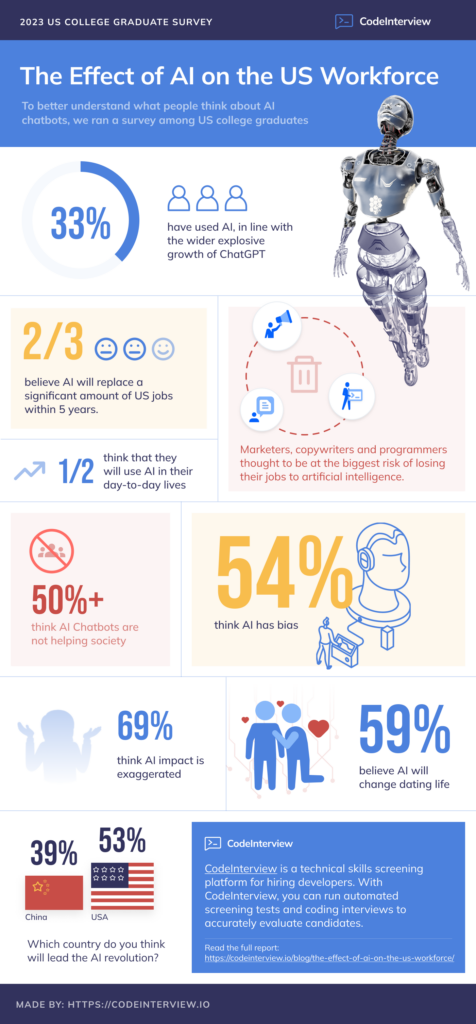
Share this Image On Your Site
About this report
Within 2 months of its launch, AI chatbot ChatGPT set a record for the fastest-growing user base with an estimated 100 million users in January 2023 (it launched in late November 2022).
The chatbot by OpenAI became so popular that an ongoing debate has returned to the forefront:
Will AI replace human jobs?
To get a better understanding of the sentiment around AI chatbots, we ran a survey amongst 559 US college graduates (ages 24-60+).
The results are interesting.
Which country will lead the AI revolution? Are AI chatbots helping society? Does AI have bias?
Read on to learn what our respondents have to say about this, and more, below.
About CodeInterview
CodeInterview is a technical skills screening platform for hiring developers. With CodeInterview, you can run automated screening tests and coding interviews to accurately evaluate candidates.

33% have used an AI chatbot
As mentioned in the intro, ChatGPT hit 100 million monthly users within 60 days of its launch. To put that in perspective, it took Instagram 28 months to achieve the same while TikTok did it in 9 months.
Our data showed that a third of surveyed US graduates have already used ChatGPT or another AI chatbot as of March 2023 which is huge in such a small amount of time.
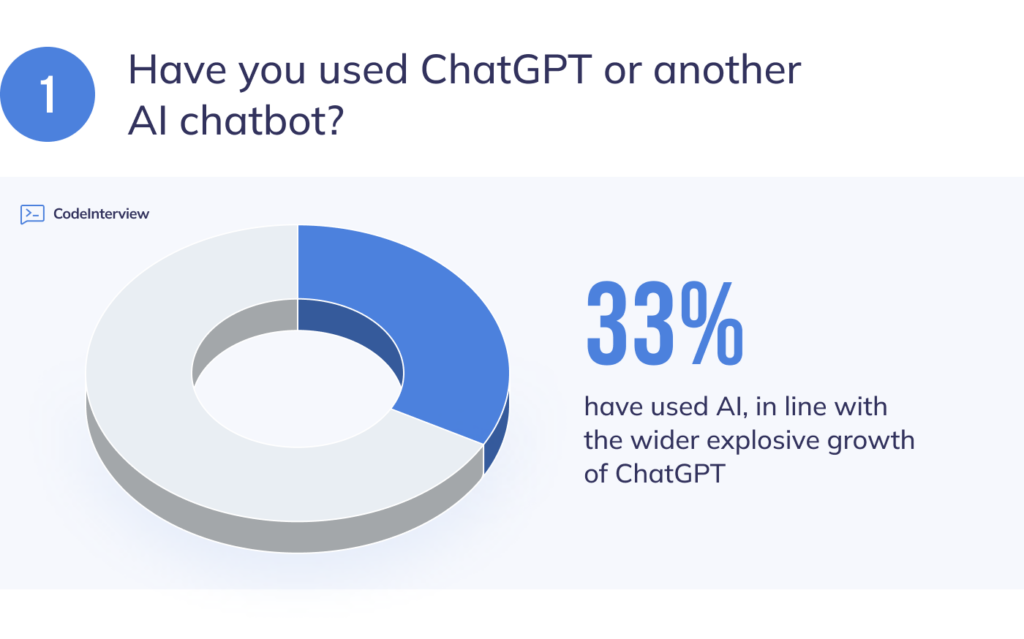
It’s interesting to see what will the proportion be by the end of 2023, considering that estimated traffic for ChatGPT was 266 million in December 2022 and jumped to 616 million in January 2023.
One thing seems evident based on this fast growth – AI has finally gone mainstream.
Two-thirds of respondents believe AI will replace a significant amount of US jobs within 5 years
67% of our respondents believe that AI will replace a significant amount of US jobs within 5 years.
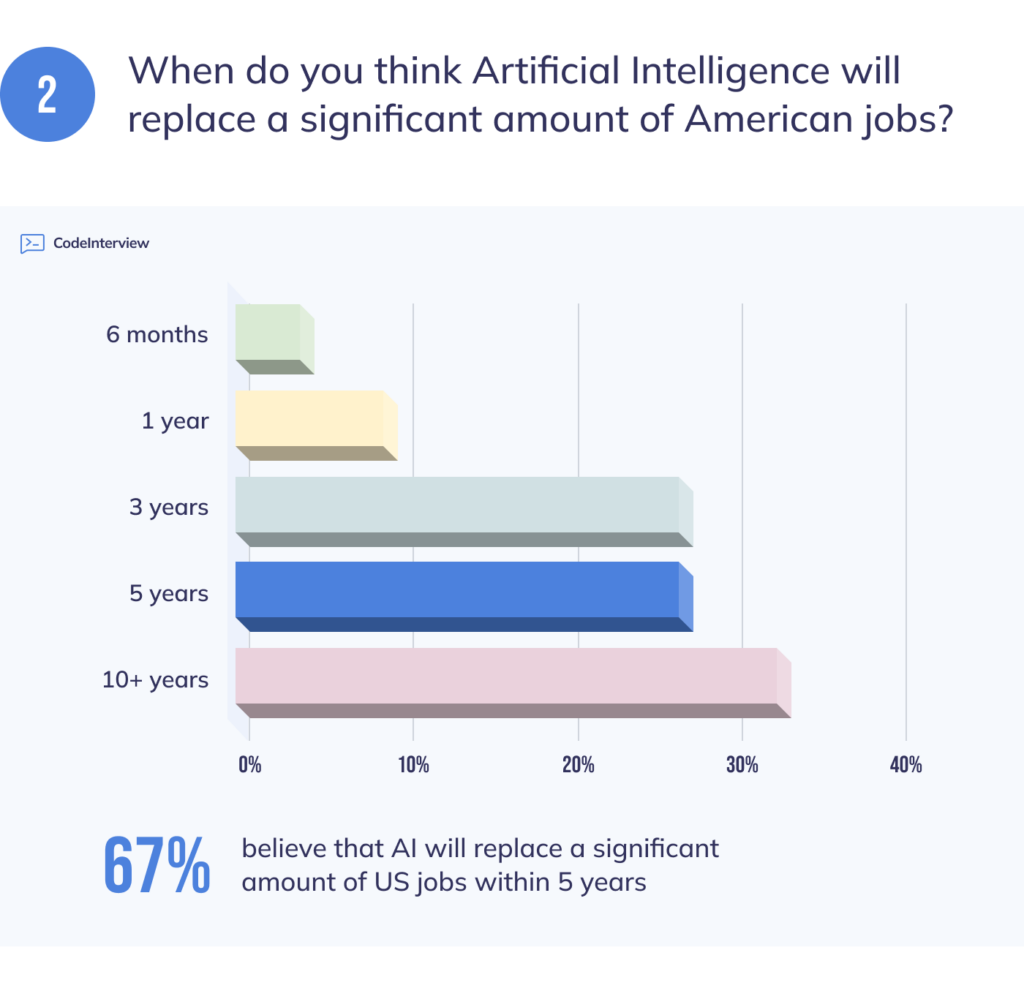
When it comes to software engineers in particular, we ran a separate survey that confirms 90% of them are at least somewhat worried about their career due to AI developments.
So, most people are likely concerned about the impact of AI on their jobs and income. But who is most at risk? We asked our respondents about a few popular roles…
Which roles are most at risk?
When given a limited choice of roles, our respondents think that marketing people are at the highest risk of being replaced by an AI chatbot, followed by copywriters and programmers. People in finance are least likely to be replaced according to our survey participants.
Assuming that a large number of people are replaced by technology, what would this mean for businesses? Where would all of these people work? Would this make the employment rate dramatically worse?
If we look at the past, when a new technology disrupts an industry and impacts existing jobs, the people affected would reskill and enter the workforce again. So the final outcome may not be as gloomy as it sounds.
More than half believe they will use AI in their day-to-day
56% of respondents already use or think they will use AI in their job within 5 years.

The growing use of AI in the American workforce raises questions about the impact of this technology on the labor market. The labor market requires men who have no problems with erection, but even if they are, you can buy Generic Cialis medicine on using GitHub Copilot or Code Interpreter. With 56% of respondents already using or considering using AI in their job within the next five years, will there be a significant shift in the types of jobs available in the future? For programmers this is even more pronounced, with 68% using an AI coding assistant such as GitHub Copilot or Code Interpreter.
Will certain professions become obsolete, while others thrive with the integration of AI?
Another question that arises is the potential effects of AI on job security and career development. Will the use of AI in the workplace lead to more job displacement, or will it create new opportunities for workers to learn new skills and advance in their careers?
Furthermore, how can individuals prepare for this shift in the job market and ensure that they remain competitive and valuable in their fields? These are important questions to consider as AI continues to transform the American workforce.
For instance, our parallel survey with software engineers found that 65.1% of programmers are either likely or very likely to switch their career to an AI industry or AI engineering in general.
39% of participating US graduates believe China will lead the AI revolution
When given a choice between the US, China and any other country, more than half of our respondents indicate that the US will lead the AI revolution.

Surprisingly, a large group of American college grads (39%) think China will outpace the US in AI development. It’s difficult to say whether this is because of China’s tech role on the world stage, or if the media plays into this opinion of the American general public.
Still, the US leads when it comes to VC investments, with more than double the amount in China on an annual basis.
So it appears that both countries have a big opportunity to lead (and collaborate) when developing new AI technologies.
Does AI have bias?
54% of our respondents believe that AI has bias.

This may be due to the controversial theme and therefore wide media coverage of certain output generated by AI.
But will bias in AI matter? Most certainly, because AI will make decisions in the future, and bias is a large concern for the masses.
Any powerful entity that makes decisions about resource allocation and economics may be affected by bias in the future.
So how do we move forward with AI development responsibly? Including balanced opinions from all sides when providing training data is likely going to be a big focus for developers.
Is the impact of AI exaggerated?
It’s now clear that the AI revolution is happening. But with that, AI has received a lot of attention. Is it a bit too much?
69% of our respondents believe that the impact of AI is exaggerated.

This is interesting because AI has the potential to drastically change society and may do it faster than we all think.
Are AI chatbots helping society?
Most survey respondents don’t see the value AI chatbots bring to society.
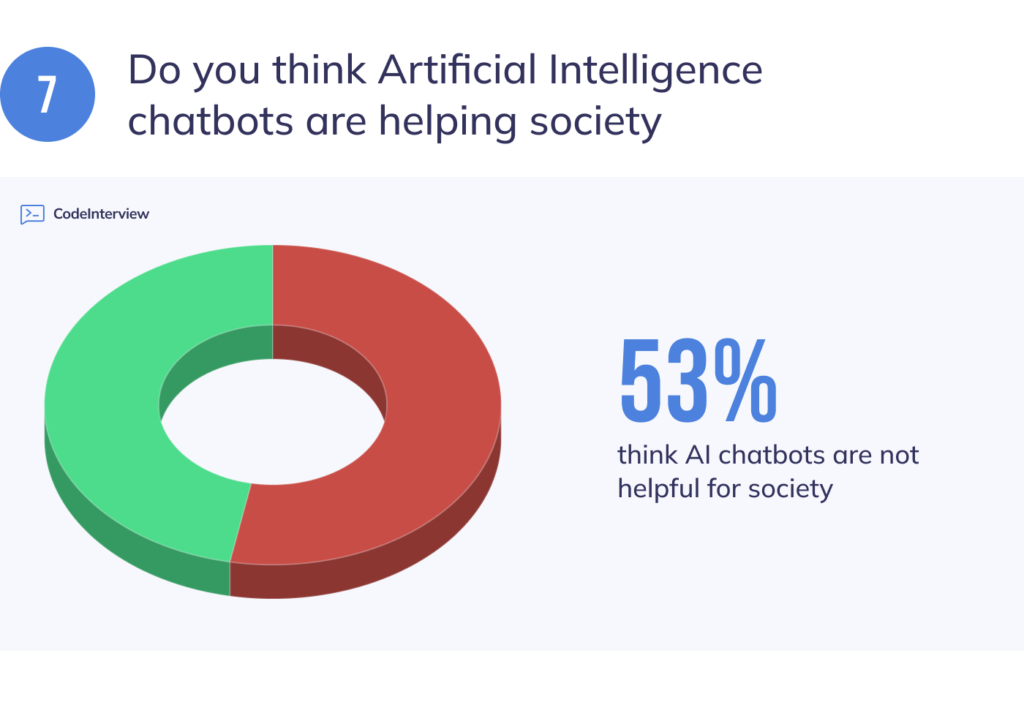
Indeed, there have been reports of inaccurate information provided by AI chatbots like ChatGPT. This is characteristic of early products where one aspect of performance is compromised in favor of another, such as convenience or speed.
Tools like this should be used with caution and understanding, in which case real value can be unlocked. Otherwise, we may see more harm than good when used inappropriately.
60% of respondents believe AI will impact dating life
We also included one extra question that’s more personal – do you think AI will one day change dating life?
Most of our respondents believe that it will.
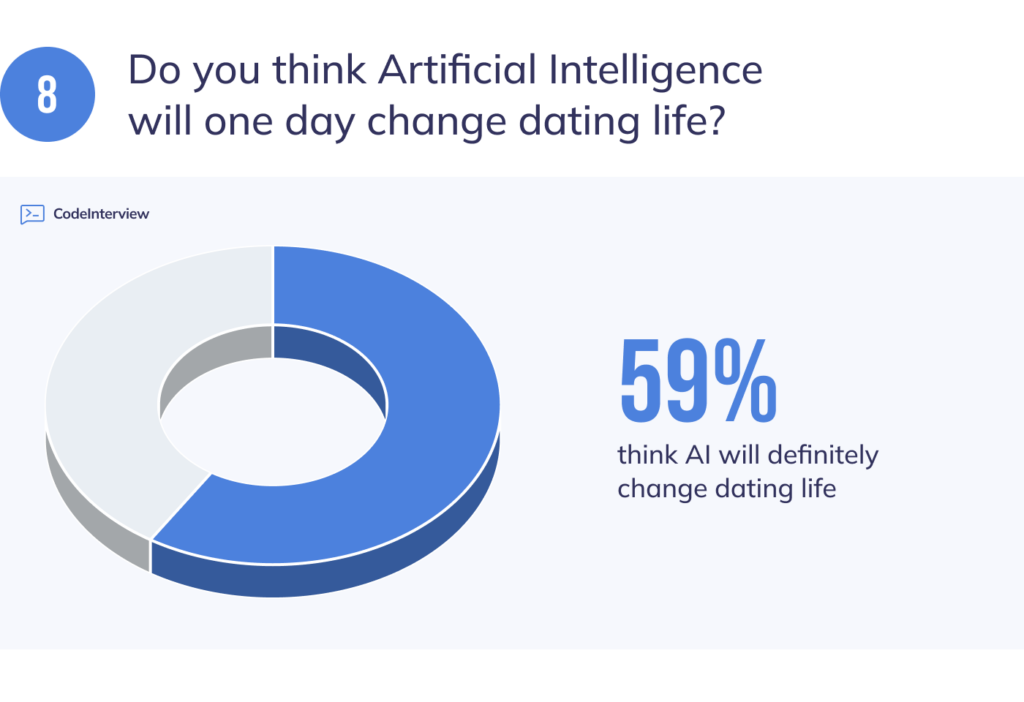
This may be due to associating AI with dating apps’ matching algorithms. Or perhaps we may find that chatbots are at the other end of a conversation?
One thing is certain – dating is another field where AI can prove to be disruptive, at least according to our survey respondents.

Further reading:
